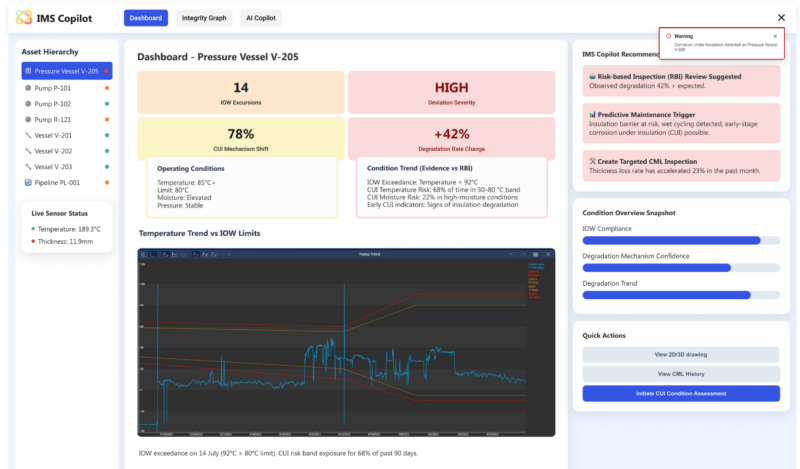If you have worked as a functional safety engineer on enough projects, you will probably have used several different techniques and different formulae to calculate the PFD average value of your SIFs and SIF elements. You may have used different software to do this or maybe you just used an Excel sheet to calculate PFD average.
You probably also wondered at some point in your professional life; why all these different techniques and why these different formulae to get to the same thing. Calculating PFD average.
Comparing Industry Standards and Methods
Different industry standard guidelines such as ISA-TR84.00.02 and IEC 61508 provide engineers with different techniques to calculate PFD average. They include simplified formulae, Fault Tree analysis and Markov modelling. But when going through these standard guidelines you will find that even the simplified formulae in these standards are not the same. You plug in the same numbers; you get slightly different PFD outcomes. You use Fault Tree analysis or Markov modelling, plug in the same numbers, and again you get slightly different PFD outcomes.
So, which of these techniques and formulae is the (most) correct one? If you ask me, the answer is all of them and none of them. All these formulae and techniques in the end output a probability. A probability, let that sink in for a bit. Whenever we are unsure about the outcome of an event, we talk about the probability of that event. So many formulae, complex mathematics and number crunching just to output a number we cannot even be sure about? Well…yeah it’s a probability. It’s not something we can calculate with a formula such as the circumference of a circle or the volume of a box and through measurement verify that that formula is 100% correct or not.
The Role of Data in PFD Accuracy
Does that mean that we can compare our work as functional safety engineers with a casino? Casinos are all about probabilities. If you are thinking that you are right, but you have to look at it from the perspective of a casino owner: The business model and profit making of a casino is based on probabilities following sound statistical data. It must, because otherwise all casinos would be out of business soon and there would be no casinos.
The point I am trying to make is that as a functional safety engineer, I think that inputting sound (statistical) data into these formulae is key to getting to a more accurate and credible probability, not so much which formula or technique you use. IEC61511 includes Clause 11.9.3 that states that failure rate data used in the reliability calculations (PFDavg/PFH) must be: Credible, Traceable, Documented and Justified, for the purposes of preventing unrealistically and dangerously low random failures being used in SIL verification calculations.
The outcome of which would be to have lower PFDavg or PFH results, that would result in a higher risk reduction than the SIF is actually providing, which in turn would lead to a false sense of safety. So, when you have to do all these PFD calculations, ask yourself what test coverage factor am I claiming for my proof test procedures? What factor for common cause failures will I include in my calculations. Is the source of the failure rate data that I use in my calculations credible and is that failure rate data applicable to my SIF elements?
Formulae Don’t Work Alone
Am I saying that it really doesn’t matter which formula or technique you use to calculate PFD average? No, I am not. Every technique or formula has its perks and limitations. For example, the equations for 1oo1, 1oo2, 1oo3, 2oo2, 2oo3, and 2oo4 architectures in ISA-TR84.00.02 part 2. They are easy to use but are limited by assuming the rare event approximation. The rare event approximation can only be used when the failure rate (λ) multiplied by the testing interval (TI) is much smaller than 0.1 (This can be stated mathematically as λTI << 0.1).
Other techniques or formulae may not allow the modelling of diverse technologies where the sensors or final elements used in each voting strategy must have the same failure rate or may have a limitation of the mathematics that demands the testing frequency be the same for all voted devices.

Pieter Poldervaart Sr. Domain Expert Safety Instrumented Systems
Pieter Poldervaart is a functional safety expert with over a decade of experience in the field. Before joining Cenosco in 2021, he worked at Shell P&T, where he served as a LOPA chair and SIF Lifecycle Consultant, leading projects and training programs. At Cenosco, Pieter is the IMS SIS/SIFpro domain expert and tool trainer, helping engineers improve safety and reliability in industrial systems.
Struggling with PFD Calculations? Meet IMS SIS
Tired of jumping between spreadsheets and tools for SIL verification and PFDavg calculations? IMS SIS is built specifically for functional safety engineers like you—offering a solution aligned with IEC 61508/61511, that brings HAZOP, LOPA, SIF design, and SIL verification together in one place. With access to trusted, traceable failure rate data and support for relevant calculation techniques and architectures, IMS SIS ensures your safety assessments are both credible and efficient.
- Built-in support for formulas and voting architectures
- Integrated failure rate libraries (e.g., OREDA, Shell) for credible, documented inputs
- Transparent, auditable workflows to support compliance and lifecycle traceability
The minimum requirements and flexibility needed for your project or plant determines what formulae or technique you use, of course keeping in mind any limitations of that formula or technique. The accuracy and credibility of the PFD output for your project or plant is determined more by the quality and credibility of the data you input than by the formula you use to calculate it with.
Discover the Power of IMS
Experience the Future of Asset ManagementCenosco’s IMS Suite enhances asset integrity, ensures reliability, and supports functional safety across your operations.




